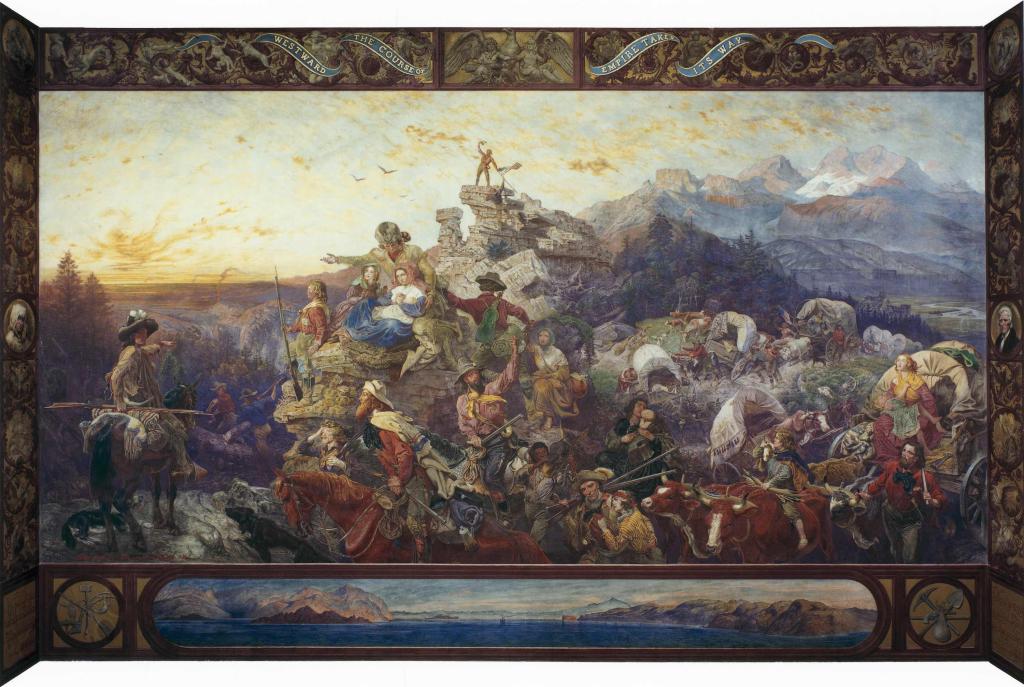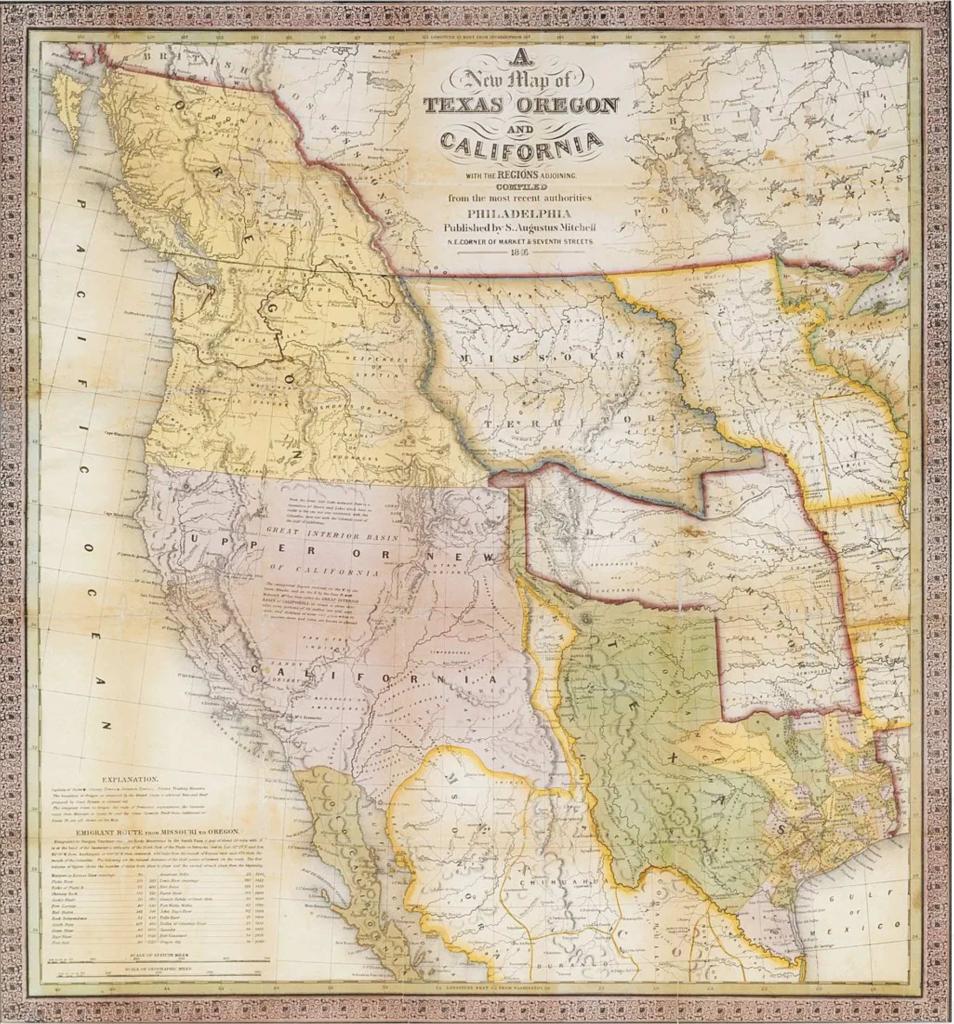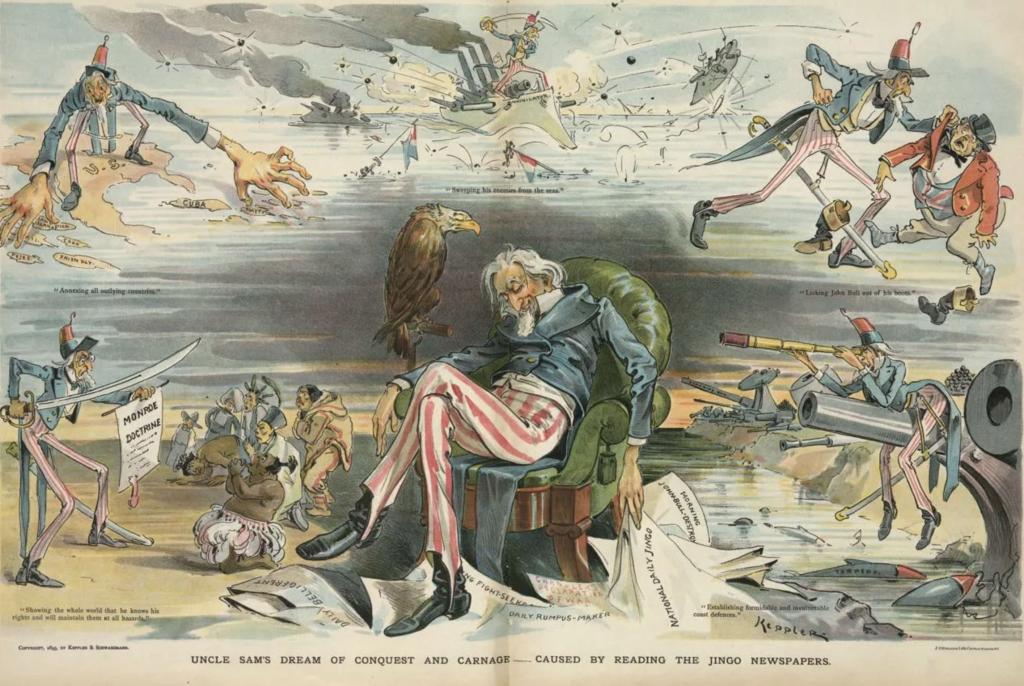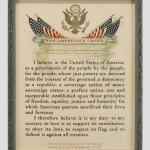My forthcoming book Kingdoms of This World: How Empires Have Made and Remade Religions (Baylor University Press, 2024) focuses on the history of empires, and specifically their religious dimensions. In this present post, I will pursue that theme in the context of US empire through history. That idea of empire has become a very potent – indeed central – theme in the writing of American history over the past couple of decades. Even so, a lot remains to be said about that specifically religious dimension.
To begin with Kingdoms of This World, and its central argument. Throughout history, the world’s great religions have been profoundly shaped by their encounters with successive empires. Secular empires have provided the means by which religions achieve their global scale, and any worthwhile historical account of those religions must reckon with that imperial dimension. In some cases, empires have favored and supported particular faiths, while in other instances they have suppressed traditions they feared or distrusted. Empires build cities and communication systems, they mix population groups from previously unconnected parts of the world, and crucially, they spread common languages. Taken together, such actions allow faiths to develop and spread, and eventually to achieve worldwide diffusion. This is not a result of any particular decision or policy: rather it is a consequence of their empire-ness.
Debating US Empire
So what about the United States? American politicians and historians have gone back and forth through the years on whether the country actually had an empire in the first place, and some even claimed a kind of American exceptionalism – the only great power never to have had an empire! The language of American empire mainly came from critics or polemicists who argued that the US was becoming woefully European: left-wing denunciations of empire peaked at very controversial times like the Vietnam era, and the Iraq war. To speak of “American empire” was an ugly smear.
Today, we smile politely at such claims of non-imperialism. An excellent point of departure on all this is Daniel Immerwahr’s How to Hide an Empire (and see also the substantial bibliography on all this that I have put together here, for anyone who wishes to use it). Throughout its history as a nation, the US was deeply invested in Caribbean affairs and conflicts, many of which involved imperial activism. After the pivotal year of 1898, nobody would really deny that the US had a real empire on European lines, in the Philippines, Hawaii, Puerto Rico, and elsewhere – not to mention short lived but comparable ventures into Cuba, Haiti, Nicaragua and other places.
The Continental Empire
Much more controversial was the argument of the emergence of the US nation over the previous century, and whether that constituted an empire. What about when the US pushed its power into California and Arizona – or before that, into Indiana and Ohio? Was that imperialism or just “natural” nation-building? Yes, we could talk about the imperial ambitions of slaveowners and those who wanted to expand the slave system across the Continent, and into the Caribbean – but again, surely, they were not representative of any mainstream national opinion? But few today deny that the United States in 1830 or 1870 assuredly and unavoidably was an empire in every sense of that term, and had been from the country’s very beginnings.
As I argued in an earlier blogpost at this site:
We tend to think that a country has natural, logical and (almost) predetermined limits, and everything it takes beyond that just and proper scope is imperialist. But it is very much a matter of opinion what those natural limits actually are. Where do nation-states end and empires begin?
Hindsight is all. We today know that the British were not destined to hold their power over Burma or Kenya, say, so that the country’s activities in those places were self-evidently part of an arrogant imperialism that was ultimately doomed. Ditto for the Belgians in the Congo, or the Dutch in the East Indies. To the contrary, we know just as well that the United States was destined to incorporate Texas or Oregon and (we often seem to think) that this was always meant to be so. That perception fundamentally affects our sense of the earlier residents of the particular place. In this view, US authorities might be treating Native populations well or badly (usually badly), but those actions were always in the context of an American political authority that was legitimate and inevitable. In contrast, US activities in Cuba or the Philippines were imperialist, because those regions were not divinely intended to be incorporated into the motherland. Alabama and Minnesota and Oregon were naturally American, so the language of colonies and empires does not apply. …
If the US under Andrew Jackson and James Polk was not an aggressive imperial power, engaged in extensive colonial settlement, then the whole concept of “empire” has no meaning. One of the most famous visual symbols of US expansion is properly entitled Westward the Course of Empire Takes Its Way (1861).
In 1835, Lyman Beecher famously wrote that “The West is a young empire of mind, and power, and wealth, and free institutions, rushing up to a giant manhood, with a rapidity and a power never before witnessed below the sun.”
Looking at the century or more of Western movies focused on Indians and Indian wars, by John Ford and so many others, it may be counter-intuitive to think of them as America’s imperial cinema. But what else were they? When we see things in that way, it is instructive to compare military experiences in the US and other lands. In 1876, for instance, General Custer was famously slaughtered at Little Big Horn. Just three years later, a British force was wiped out by Zulus at Isandlwana, a disaster somewhat redeemed by the subsequent stand at Rorke’s Drift, the subject of the classic 1964 film Zulu. One incident occurred in North America, one in Southern Africa. Until recently, few would have thought to classify them as closely parallel instances of successful anti-imperial resistance. But again, what else were they?
Three World Empires
One very famous historical work from Victorian Britain was Sir John Seeley’s The Expansion of England (1883), a masterful study of the dynamics of empire. (As a History student at Cambridge back in the Mesozoic era, the Seeley Library at that university used to be a central fact of my existence.) Seeley’s picture of the balance of world powers in his day is fascinating:
In this [present] phase the English world-empire has two gigantic neighbors in the West and in the East. In the West she has the United States and in the East Russia for a neighbor. These are the two States which I have cited as examples of the modern tendency towards enormous political aggregations, such as would have been impossible but for the modern inventions which diminish the difficulties caused by time and space. Both are continuous land-powers. Between them, equally vast but not continuous, with the ocean flowing through it in every direction, lies, like a world-Venice, with the sea for streets, Greater Britain.
For Seeley, there were three great world empires, and the US was evidently just as imperial as the British. All that differed between the two was that the US was (mainly) a united land mass and the British world empire was a “world Venice.” It’s a striking image. But this all comes from long before the US TransPacific leap to “true” global empire. Seeley hoped that Britain would draw on American examples for its future imperial survival: “England may prove able to do what the United States does so easily, that is, hold together in a federal union countries very remote from each other.” Canada and New Zealand would become “states” in a global British empire, just like Texas and California were within the American polity.
Acknowledging Empire
As you will see from that bibliography I mentioned earlier, that acknowledgment of American empire – from the earliest times of its foundation – is now very widespread. Scholars pursue the imperial approach into many aspects of research, including the study of literature, of science, of education, of social policy… Just as an exercise, download that bibliography and run a search for the word “empire” and just see the many and surprising contexts in which it appears. The following is a wildly selective listing of some recent titles, all from highly respectable academic presses. Note how often authors take topics that would have been very familiar in bygone years – urban history, immigration history, education history, industrial history, borderlands history – but now examine them through the imperial lens:
Katharine Bjork, Prairie Imperialists: The Indian Country Origins Of American Empire (University of Pennsylvania Press, 2019)
Solsiree del Moral, Negotiating Empire: The Cultural Politics Of Schools In Puerto Rico, 1898-1952 (The University of Wisconsin Press, 2013)
Andrea Geiger, Converging Empires: Citizens and Subjects in the North Pacific Borderlands, 1867–1945 (University of North Carolina Press, 2022)
Walter Johnson, River of Dark Dreams: Slavery and Empire in the Cotton Kingdom (Harvard University Press, 2013)
Manu Karuka, Empire’s Tracks: Indigenous Nations, Chinese Workers, and the Transcontinental Railroad (University of California Press, 2019)
Jessica M. Kim, Imperial Metropolis: Los Angeles, Mexico, and the Borderlands of American Empire, 1865–1941 (University of North Carolina Press, 2019)
Alfred W. McCoy, Policing America’s Empire: The United States, the Philippines and the Rise of the Surveillance State (University of Wisconsin Press, 2009)
Anne M. Martínez, Catholic Borderlands: Mapping Catholicism Onto American Empire, 1905-1935 (University of Nebraska Press, 2014)
Anders Bo Rasmussen, Civil War Settlers: Scandinavians, Citizenship, and American Empire, 1848-1870 (Cambridge University Press, 2022)
Andrew J. Torget, Seeds of Empire: Cotton, Slavery, and the Transformation of the Texas Borderlands, 1800–1850 (University of North Carolina Press, 2015)
Or look at this recent collection of essays edited by Michael A. Blaakman, Emily Conroy-Krutz, and Noelani Arista, The Early Imperial Republic: From The American Revolution To The U.S.-Mexican War (University of Pennsylvania Press, 2023). The book’s description is as follows:
In its first seven decades, the United States transformed from a fledgling seaboard confederation into an imperial juggernaut with aspirations to rule a continent and beyond. The essays in this volume explore the origins of U.S. imperialism, using the lens of empire to bring Atlantic, global, and Native American perspectives on the early republic into focus within a single frame.
Twenty or thirty years ago, would so many strictly mainstream US historians have been talking so uncontroversially about The Early Imperial Republic?
So what about the religious aspects of all this? More next time.
















